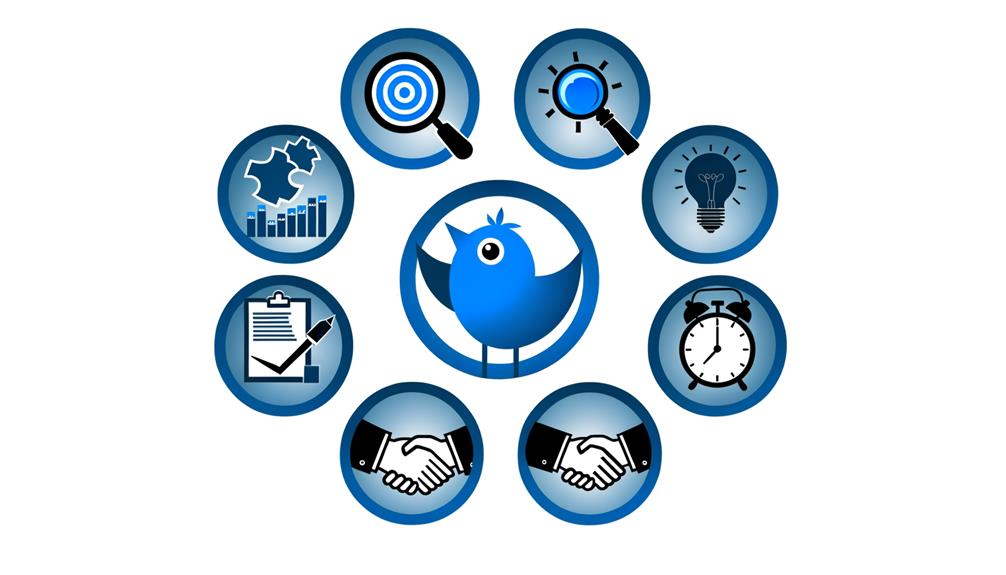No products in the cart.
So, you’ve decided to throw your entire marketing budget at Twitter ads without considering audience segmentation? That’s an innovative strategy if your goal is to burn through cash without seeing any return on investment.
But let’s assume you’d rather not take that path. Segmenting your Twitter ad audience is not just a tactic for the overly meticulous—it’s a fundamental approach to ensure your message lands in front of the eyes that will actually value it.
By tailoring your campaigns to specific groups, you’re not just shooting arrows in the dark; you’re a sniper who knows exactly where the target stands.
Curious about how this precision can elevate your campaign results? Let’s explore the impact of getting it right.
Key Takeaways
- Audience segmentation enhances ad targeting precision, increasing engagement and conversion rates.
- Tailored messaging based on demographics, behaviors, and interests boosts ad relevance and effectiveness.
- Custom audience tactics, like focusing on interested users, maximize ROI and foster loyalty.
- Measuring campaign success through key metrics allows for strategic refinements, enhancing overall ad performance.
Understanding Audience Segmentation
Diving into audience segmentation unlocks the potential to craft your Twitter ads with precision, ensuring they strike a chord with each distinct group within your target market. By breaking down your audience based on demographics, behaviors, or interests, you’re not just shooting arrows in the dark. Instead, you’re honing your aim to engage each segment with messages that resonate deeply. This isn’t just about understanding who your audience is; it’s about unlocking the nuances of their preferences and behaviors.
With audience targeting, you dive deeper into engagement analysis, identifying which segments respond best to specific types of content. This insight allows for segment customization, where ad personalization isn’t just a buzzword but a strategic approach to increase relevance and, consequently, engagement. You’re not just sending out ads; you’re engaging in a conversation, tailored to the interests and needs of each segment. This strategic approach doesn’t just enhance engagement; it optimizes your ad spend by focusing your efforts on the segments that are most responsive.
Through this analytical and strategic lens, you’re not just advertising; you’re connecting, ensuring each ad delivered is a step towards a more engaged, responsive audience.
Benefits of Targeted Advertising
By leveraging targeted advertising, you can significantly enhance your conversion rates, with studies showing a 74% increase when compared to broader, non-targeted campaigns. This improvement isn’t just a fluke; it’s a direct result of presenting your audience with content that resonates with their specific interests and needs. Think of it as sharpening your message to cut through the noise directly to your target audience.
Targeted advertising isn’t just about higher conversion, though. It’s a catalyst for increased engagement. By segmenting your Twitter ad audience, you’re likely to see up to a 65% boost in engagement rates. This uptick is due to the relevancy of your messaging. When ads feel personal, they’re more than just advertisements; they’re conversation starters, fostering a connection between your brand and your audience.
Moreover, personalized ads, which are a hallmark of targeted advertising, boast a 6x higher transaction rate than their generic counterparts. This statistic underscores the power of relevance in advertising. By tailoring your ads to match the interests and behaviors of your audience segments, you’re not just reaching more people; you’re reaching the right people. This strategic approach not only elevates your brand’s relevance but also significantly reduces customer acquisition costs by up to 50%, showcasing the efficiency and effectiveness of audience segmentation.
Strategies for Segmenting Audiences
Understanding how to effectively segment your Twitter ad audience is crucial for delivering content that resonates and drives engagement. The essence of strategic audience segmentation lies in recognizing the diverse nature of your potential customers and crafting messages that speak directly to their interests and needs.
By diving into behavioral targeting, you’re tapping into a goldmine of data on user actions and preferences. This approach allows you to fine-tune your campaigns to reach individuals based on their interaction with your brand or similar products, ensuring your message hits home.
Similarly, demographic segmentation breaks down the audience into age, gender, location, and more, offering a clear path to tailor messaging that aligns with the life stage and cultural context of each group.
Interest-based segmentation further refines your strategy by homing in on what your audience loves. Whether it’s sports, technology, or fashion, aligning your ads with these interests magnifies relevance and connection. Combining these strategies empowers you to craft tailored messaging that not only captures attention but also fosters meaningful engagement, setting the stage for enhanced brand awareness and a stronger ROI.
Custom Audiences Explained
Custom Audiences on Twitter empower you to directly target a unique group of users, enhancing your ad campaigns with unmatched precision and relevance. By leveraging this feature, you’re not just shooting in the dark; you’re strategically aiming your marketing efforts where they’re most likely to resonate and yield results.
Consider these critical aspects of Custom Audiences to revolutionize your approach:
- Audience customization: Tailor your outreach to users based on their previous interactions with your app or website, ensuring your message is always relevant.
- Targeting efficiency: Focus your advertising dollars on individuals who’ve already shown interest in your products or services, maximizing your ROI.
- Segmentation benefits: Break down your target audience into more refined groups for personalized messaging, driving deeper engagement.
- Engagement enhancement: By targeting users familiar with your brand, you’re more likely to spark meaningful interactions and loyalty.
- Retargeting and expansion: Not only can you re-engage past visitors, but you can also discover new audiences similar to your best customers.
Incorporating Custom Audiences into your Twitter strategy isn’t just smart; it’s a necessity for staying competitive and captivating in today’s fast-paced digital landscape.
Measuring Campaign Success
To gauge the effectiveness of your Twitter ad campaigns, it’s crucial to monitor and analyze key performance metrics such as click-through, engagement, and conversion rates. Tracking these metrics enables you to understand the impact of your ads and identify areas for improvement. By leveraging tools like Twitter Analytics, you can dive deep into the data, uncovering which audience segments are most responsive to your messaging.
Improving targeting and optimizing performance become attainable goals when you’re equipped with actionable insights. Analyzing audience segmentation data isn’t just about measuring success; it’s about refining your strategy. You’ll discover that certain segments react more favorably to specific types of content or messaging. This knowledge allows you to adjust your targeting and messaging, enhancing the relevance of your ads and ultimately boosting their effectiveness.
Frequently Asked Questions
What Is Targeting Audience in Twitter Ads?
Targeting your audience in Twitter Ads means selecting users based on interest categories and behavioral signals. It’s a strategic move that ensures your message reaches those most likely to engage, boosting your campaign’s effectiveness.
What Is the Best Audience Size for Twitter Ads?
The best audience size for Twitter ads minimizes audience overlap and maximizes conversion rates. Aim for a minimum of 100X users, balancing reach with strategic targeting to innovate and drive campaign success.
What Is Twitter’s Main Target Audience?
Twitter’s main target audience includes affluent millennials and a diverse demographic, with significant user engagement across urban to rural areas. Understanding these platform trends and user demographics is key for strategic, innovative ad targeting.
How Do I Choose My Audience on Twitter?
To choose your Twitter audience, dive into audience analytics to understand demographics and interests. Focus on users showing profile engagement. Strategically analyze data to innovate your approach, ensuring your ads resonate with the right crowd.
Conclusion
In conclusion, segmenting your Twitter ad audience isn’t just beneficial; it’s strategic. By tailoring your messages to specific groups, you’re not only enhancing engagement but also optimizing your campaign’s performance. Custom audiences allow for precision targeting, ensuring your ads reach those most likely to respond.
Remember, successful segmentation requires constant analysis and adjustment. Measure your campaign’s success meticulously to refine your approach, driving superior ROI. In the dynamic landscape of Twitter ads, audience segmentation is your key to standing out.






